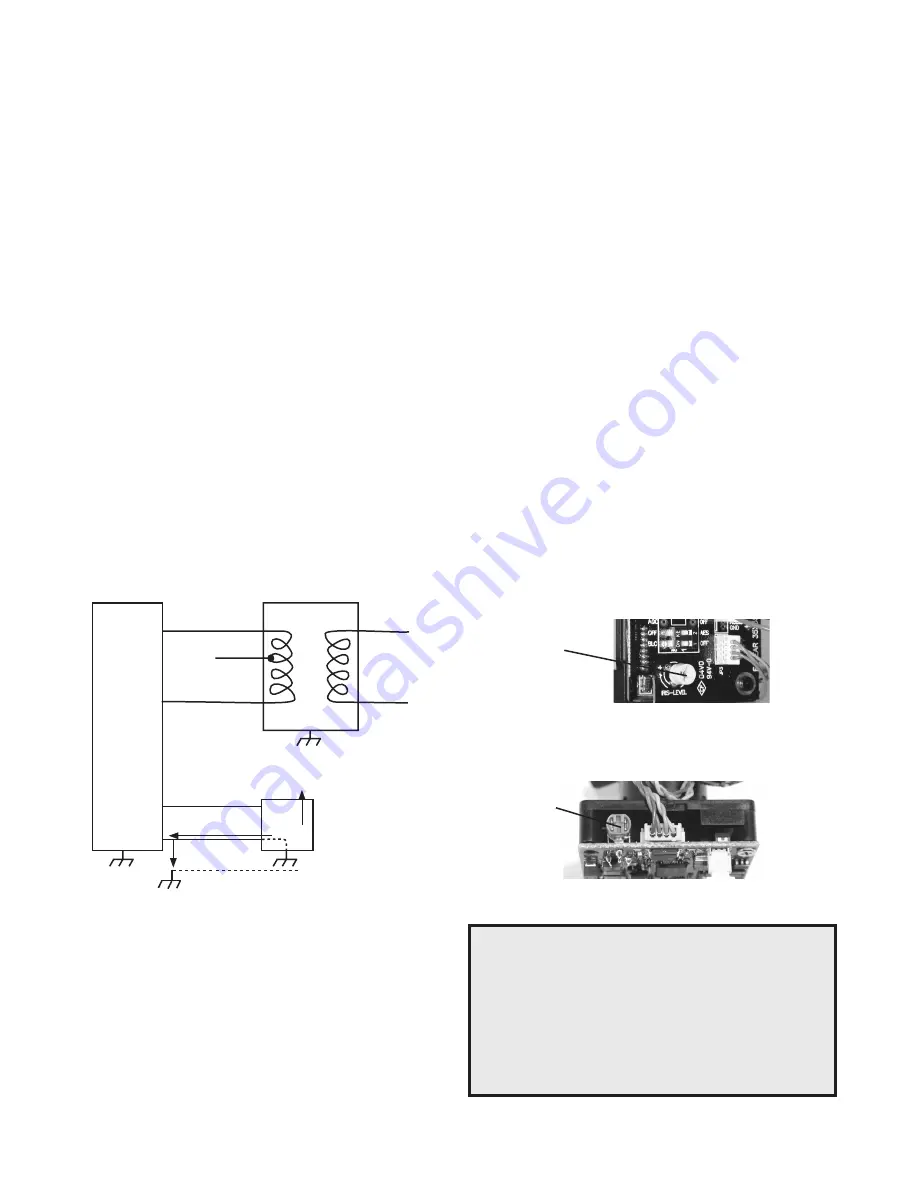
- 10 -
Power Supply
Power A
Power B
Camera
Assembly
Primary
Power
Video Signal
Video Shield
Monitor
(Ground Return)
Figure A Ground Loop
TROUBLESHOOTING
If you experience problems with the camera picture please check
these simple troubleshooting procedures for possible solutions before
calling technical support.
IMPORTANT NOTE: If you have removed the ground loop and
the horizontal line still remains on screen
call Videolarm technical support for further
information.
GROUND LOOPS
Generally a horizontal line on screen, whether moving or stationary,
means you have a ground loop problem. The video shield should
only be connected to ground through the monitor or other electronic
equipment that uses the video signal. Connecting the video shield to
ground at the camera will create a ground loop, which may interfere
with the video signal (See Figure A). This should not damage the
camera, but the video signal may become unusable. A ground loop
problem will cause a dark horizontal bar to slowly “scroll" through the
picture. To solve this problem, remove all ground connections from
the video connection EXCEPT for the ground at the terminating end
of the video signal.
The video termination should be a 75-ohm impedance, standard in
monitors and other video equipment. If the video signal goes to more
than one piece of equipment, a monitor and multiplexer input for
instance, insure that one and only one piece of equipment terminates
the video signal with 75 ohms; otherwise the image will be degraded
and may appear to be unusually dim.
STATIONARY OR SCROLLING HORIZONTAL
LINES ON SCREEN
PICTURE IS CLEAR, LOW OR NO COLOR;
PICTURE IS DARK OR GRAINY IN GOOD
LIGHTING CONDITIONS
The auto iris lens is set at the factory. If you experience video
too light or dark you can manually adjust using the auto iris
adjustment screw.
If there is low or no color the Auto Iris is too open, if the picture is
dark or grainy in good conditions the Auto Iris is too closed.
To adjust the auto iris lens, first locate the AUTO IRIS ADJUSTMENT
SCREW on the camera PC board. Using a small insulated
screwdriver (blade width of from 1/16" to 3/32"), adjust the control.
Turning the control CLOCKWISE opens the iris, making the image
brighter.
Turning the control COUNTER CLOCKWISE closes the iris, making
the image darker.
Figure D
AUTOMATIC BROWN OUT FEATURE
The camera includes an automatic brown out feature which is acti-
vated whenever the incoming voltage drops below 10 VAC or VDC.
IMPORTANT NOTE ON AUTO IRIS ADJUSTMENT:
WHEN ADJUSTING, USE A SMALL, INSULATED
SCREWDRIVER.
The auto iris adjustments are very sensitive.
Use gentle pressure when turning. To adjust, turn either clock-
wise or counter-clockwise no more than one degree at a time.
Check the monitor after each turn to determine is the desired
brightness and color have been obtained. When the adjustment
is satisfactory, place a hand over the lens to block out all light.
Quickly remove the hand to be sure the iris reacts.
LINE LOCK
All cameras are all shipped from the factory with the line lock function
disabled. If your application requires Line Lock contact Videolarm.
Auto Iris
Adjustment
Screw
COLOR & DAY/NIGHT AUTO-IRIS
Figure B
BLACK & WHITE AUTO-IRIS
Auto Iris
Adjustment
Screw











